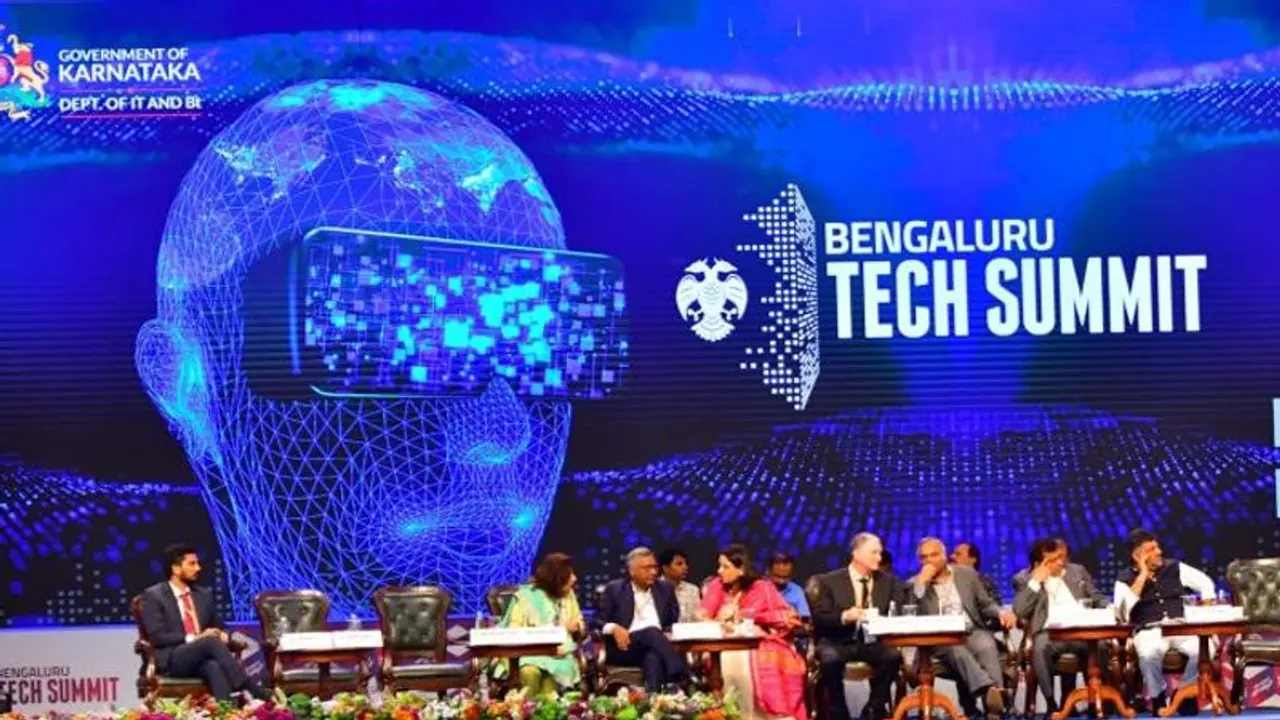At the individual stall level, where are the at-show marketing activities, or the use of interactive technology to bring exhibits and brands to life, asks Girish Linganna
It was almost a perfect day lit by an iridescent sun passing in and out of the clouds. A couple of days ago, NASA and weather experts alerted that a Sun storm could hit Earth on November 30, causing a minor blackout of radio and GPS signals. That did not seem to exist, as I strolled onto the premises of the Palace Grounds in Bengaluru. The 26th edition of the three-day Bengaluru Tech Summit (BTS) -- Asia’s largest -- had just kicked off on November 29 at the majestic Bangalore Palace and its sprawling grounds adorned with brightly fluttering buntings, festoons and national flags of over 30 countries.

Envisioned on the focal theme of Breaking Boundaries, it promised to serve as a catalyst for a dynamic gathering of people, uniting large tech company founders and executives, dynamic startups, visionary investors and cutting-edge research labs from these 30 nations. Organized jointly by the Department of Electronics, Information Technology, Biotechnology and Science & Technology, Government of Karnataka; and Software Technology Parks of India, Bengaluru, the Summit promised to encapsulate the spirit of the limitless potential of technology and chart a course towards a future defined by innovation, collaboration disruption, exploration and boundless opportunities.
Inaugurated by Karnataka Chief Minister Siddaramaiah in the presence of his Deputy, DK Shivakumar, the Summit saw India’s research and development organizations -- such as the DRDO, ISRO, ICMR, C-DAC, BIRAC, IIAP, IIIT-B, and NRDC, as well as other organizations -- participating as exhibitors.
With over 75 sessions, more than 400 speakers, over 350 startups, over 600 exhibitors and around 20,000 business participants, the summit set the platform for an unprecedented investigation into how innovation and collaboration could be combined.
At the Indian Space Research Organisation’s (ISRO) industry pavilion, Chandrayaan-3 was the most prominent feature this year, serving as a symbol of India’s significant achievement in the field of space exploration. It not only highlighted the outstanding accomplishments of ISRO but also the role that small and medium-size enterprises, startups and private companies had played in assuring the success of the Chandrayaan-3 Mission.
A replica of the Chandrayaan-3 Lander scaled to 1:1, in addition to an immersive experience of learning about Moon missions, space science and the technology behind Chandrayaan-3, had been generated for the first time in a geodesic dome that had been specially erected. This dome was equipped with augmented reality (AR) and virtual reality (VR) technology.
But Not All Was Hunky-Dory
The Indian government has set a goal of making technology 20-25 per cent of the nation’s total GDP -- which also is growing at about 8 per cent -- by 2025-26, making it the third-largest economy in the world amounting to $5 trillion. And India’s premier research and development organizations are intrinsically bound by this promise.
However, this landmark Summit also had its downside. It was extremely demoralizing -- and thoroughly disappointing -- to observe that such esteemed institutions as the DRDO and ISRO had simply set up stalls on the premises of this prestigious and widely acclaimed Summit. The general public simply walked by and stared at the models uncomprehendingly, without anyone being present to provide explanations, interpretations, pictures or instructional booklets.
In fact, there seemed to be no one around who could light a spark of curiosity in visitors who were in quest of more knowledge about the exhibits.
It seemed as if these institutions had used public money to meet statutory requirements to justify their presence there. The individuals occupying these kiosks appeared to be lacking not just basic knowledge about the technology in question, but also the passion to pique the viewers’ interest in the subject. It is possible that they were only present for “window-dressing” the stalls.
The Bengaluru Tech Summit should ideally serve as a venue to demonstrate key technology developments instead of shifting its focus to showcase and highlight images of politicians.
Event organisers seemed to have been handled with a distinct lack of professionalism. Across the wide expanse of the Palace Grounds, there was a noticeable absence of informative posters highlighting the programme itinerary and a lack of proper signage directing attendees to the respective halls and the activities within them.
At the individual stall level, the four key pillars on which a full-service exhibition company’s expertise rests -- design, build, manage and engage -- seemed non-existent with the absence of on-stand activities, fun and interactive elements and competitions that would otherwise capture the attention of show visitors.
Where are the at-show marketing activities, or the use of interactive technology to bring exhibits and brands to life?
With the dates for the subsequent two editions disclosed as November 19-21 in both 2024 and 2025 in advance, worldwide technology organizations will be encouraged to gear up for participation in advance.
The author of this article is a Defence, Aerospace & Political Analyst based in Bengaluru. He is also the Director of ADD Engineering Components, India, Pvt. Ltd, a subsidiary of ADD Engineering GmbH, Germany. Views expressed are personal and do not reflect the opinions and beliefs of the website or its affiliates.
